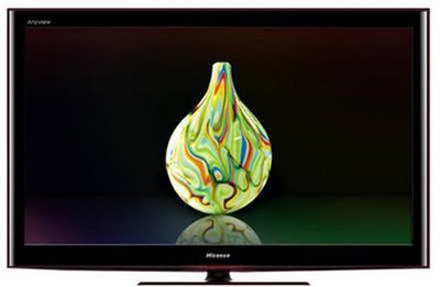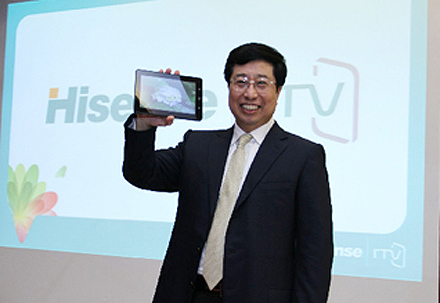CHINA: aiming to become the new world leader in LCD panels?

This is turning into something of a series, but following on from my postings on the state of the LCD TV panel market in Japan and Korea, now it's time to take a look at what's going on in one of the world's biggest markets for LCD TVs – and just about everything –, China.
Although the recent tough times have led to both the Korean giants, LG and Samsung, delaying their plans to open LCD plants in China – and rumours in China suggest this may lead to a shelving of such plans –, the Chinese LCD panel business is booming.
In the first quarter of this year China overtook Japan as an LCD panel manufacturing country. It's still behind the true giants of the industry, South Korea and Taiwan, but as they say, it's working on that.
The biggest Chinese TV manufacturers, BOE Technology Group and TCL Group, have recently started operations at their own large-panel LCD panel plants, and plan to boost production further, meaning that LCD production in China next year will be double this year's level.
And although there's a common misconception that the emerging Chinese market is only buying basic flatpanel TVs to replace old CRT TVs, or simply bring TV to more households, in fact Chinese companies are keeping pace with their Japanese and Korean neighbours when it comes to rolling out new technology.
Yes, government incentives may have seen explosive growth of 30% in the Chinese flatscreen TV market last year, so far this year there has been much slower growth. To lure more customers in, Chinese manufacturers are turning to innovative technologies.
Last year Hisense became the first company in China to launch a full-LED-lit 3D TV, and is also introducing 'smart' internet-connected sets. This year – in fact, in the past few weeks - it has rolled out what it calls 'The world's first personalised smart TV', in the form of its I'TV model.
Get the What Hi-Fi? Newsletter
The latest hi-fi, home cinema and tech news, reviews, buying advice and deals, direct to your inbox.
Switching to I'TV?
It's a different take on the tablet device concept, in which TV capability is firmly to the fore, with a range of features including the ability to stream either live broadcasts or recorded content from the home TV to the I'TV or a smartphone.
Along with internet and gaming capability, that's all made possible by the spread of technical expertise within the company: as it says, 'Development of I'TV depended on efforts of a number of in-house researchers, with Hisense Electric as the general designer, Hisense Media Networks as the developer of the support platform and application store, Hisense Communication as the developer of the software operating system and Hisense Broadband Multimedia Technology as the developer of the multi-screen interactivity.
'Thanks to the in-house industrial ecological chain through a collaboration across multiple divisions and cross-sector cooperative development, Hisense was able to build technology clusters based on a combination of system software, cloud computing, internet applications, artificial intelligence, industrial design and operational services and complete development of the personalised smart TV in a short time.'
That must have some of the Japanese and Korean companies, until recently struggling to bring the whole interactive TV thing together. staring in wide-eyed amazement.

Hisense chairman Zhou Houjian – that's him above, with the I'TV – says that 'The new product, a result of "micro innovation and major revolution", brings to fruition my childhood dream and is the revolutionary product that I have waited a lifetime to produce.'
He expects the concept to be something of a 'game-changer' in the Chinese TV market, making the home TV nothing more than a 'terminal' for a whole range of similar personal devices able to stream TV from it using cloud computing facilities.
Meanwhile, the boom in LCD panel production capacity in China, and the slowing domestic demand for TVs, threatens to further exacerbate the global oversupply in the market.
Thinking big by thinking smaller
And there's a further worry for the established names in the LCD panel business: that the Chinese companies will soon be stealing market share.
While Japanese companies such as Tokyo Electron and Asahi Glass already have plants in China, to date most Chinese manufacturers are concentrating on TV-size panels, which are simpler to manufacture than the smaller panels used, for example, on tablet devices and smartphones.
However, although BOE and TCL have only just started making large-screen displays, both have plans to switch some production to the smaller, more intricate panels for handheld devices. And that acquisition of knowledge and capability will pose a threat to technology the Japanese and Korean companies have taken many years to develop.
Follow whathifi.com on Twitter
Andrew has written about audio and video products for the past 20+ years, and been a consumer journalist for more than 30 years, starting his career on camera magazines. Andrew has contributed to titles including What Hi-Fi?, Gramophone, Jazzwise and Hi-Fi Critic, Hi-Fi News & Record Review and Hi-Fi Choice. I’ve also written for a number of non-specialist and overseas magazines.
